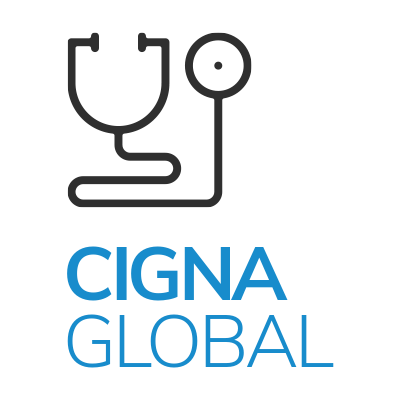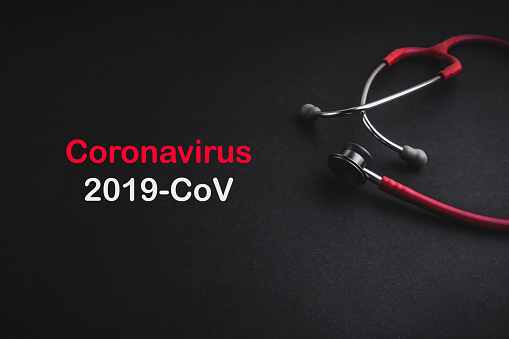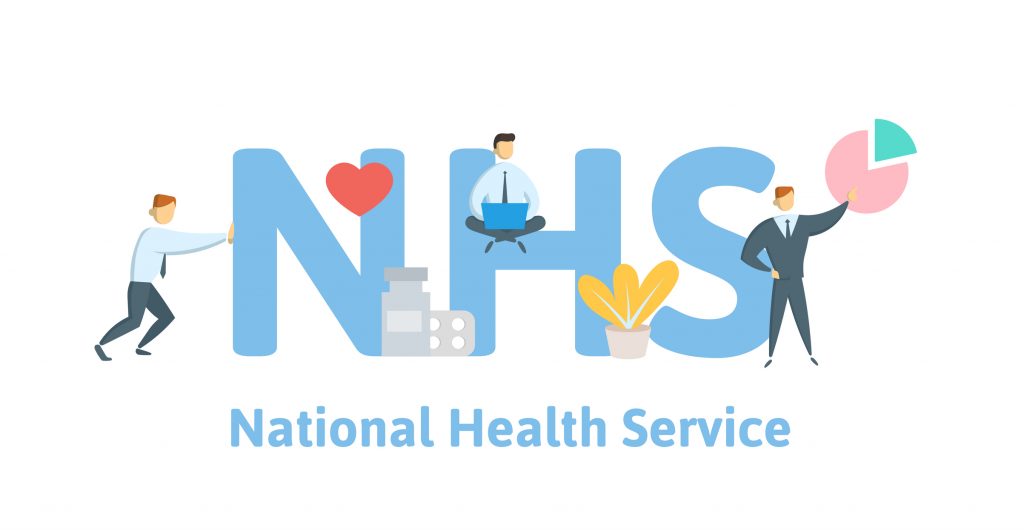
If you and your family are looking for a comprehensive health insurance plan that will cover you around the world, the Cigna Global Medical plan is worth considering. This plan provides international medical care around the world, and is annually renewable so you can keep the plan as long as you need. The plan also provides many customizable options allowing you to choose the coverage that is right for you – and your budget!
The Standard Benefits
The plan includes standard hospital benefits in three levels: Silver, Gold and Platinum. Each of these options offer a higher level of protection for hospitalization. You will also be able to choose your out-of-pocket amount so that you can balance the cost of the plan with the amount you pay when you seek medical attention.
Optional Modules – Enhance Your Coverage
Once you’ve chosen the level of coverage (Silver, Gold or Platinum) as well as your out of pocket costs, the next step would be to select any additional modules (or, add-ons). There are four options to add, as described below:

Please note: This plan WILL cover the Coronavirus, COVID-19, the same as any other illness or accident according to the terms of the policy. The plan will only cover the medical expenses if you get the virus after the start date of the plan.
You can also view a complete list of the benefits online.
This plan is medically underwritten so you will need to answer a list of medical questions, and if requested, you will need to provide medical records. Based on your answers and your medical history, Cigna will evaluate your medical background and decide how to handle any pre-existing conditions. This process takes approximately 5 business days to be reviewed.
If you have questions about the plan, or would like to speak directly with one of our licensed customer service representatives, please contact us and we would be happy to assist you.

The Liaison Travel plan, administered by Seven Corners, is one of our newest international travel medical insurance plans. With no student requirements, anyone traveling outside their home country is eligible.
The plan comes in three levels: Economy, Choice and Elite, allowing travelers to choose their deductible and coverage.
All three levels of the plan will cover:

Please note: This plan WILL cover the Coronavirus, COVID-19, the same as any other illness or accident according to the terms of the policy. The plan will only cover the medical expenses if you get the virus after the start date of the plan.
You can also view a complete list of the benefits online.
Travelers can purchase the plan right online, add their dependents, and begin coverage as soon as the next day. Immediately after purchase, the documents (including the ID card) will be emailed in case they need to seek medical treatment during their trip. In addition, all individuals on the plan will have 24/7 Travel & Emergency Assistance in case they need immediate attention.
If you have questions about the plan, or would like to speak directly with one of our licensed customer service representatives, please contact us and we would be happy to assist you.

We are excited to introduce the Liaison Student, our newest international student health insurance plan, that will cover students internationally around the world. This plan is available in three levels: Economy, Choice and Elite, allowing students to choose the plan that works best for their needs and budget.
This plan also gives students the flexibility to choose their coverage and deductible, and they can choose to include or exclude coverage in the United States.
All three levels of the plan will cover students for:

*For a complete list of sports covered in this plan please refer to the benefits.
Please note: This plan WILL cover the Coronavirus, COVID-19, the same as any other illness or accident according to the terms of the policy. The plan will only cover the medical expenses if you get the virus after the start date of the plan.
You can also view a complete list of the benefits of the plan to see if this plan is appropriate.
Students can enroll right online and begin coverage as soon as the next day, and students can add their spouse and/or child(ren) to the plan. The documents will be emailed to the student right after enrolling, and in these documents will be the ID card in case they need medical treatment.
If you’d like to learn more about the plan, have questions, or would like to enroll, you can contact us directly and one of our licensed customer service representatives would be happy to assist you.

Want cancellation insurance in case the coronavirus flares up where you’re going?
1. Book trip
2. Buy trip cancellation within 20 days of first trip booking
3. Make sure to add cancel for any reason (CFAR) or buy the RoundTrip Elite with CFAR
As the Coronavirus begins to appear in more and more countries around the world, many students and schools have started thinking about the best way to protect the cost of their upcoming trip. Whether it’s a study abroad group program for two weeks or your two-month European vacation, we want to make sure your trip and investment are protected.
Trip cancellation insurance is commonly referred to as true “travel insurance”. These types of plans provide protection for your trip costs, plus they also include many additional benefits such as travel delay, missed connection, travel assistance services and more. So how does it work and how can you buy a trip cancellation plan in the midst of the Coronavirus? Let’s take a look at our RoundTrip Elite Trip Cancellation Insurance plan, and benefits to note specifically, when dealing with a pandemic threat.
Protection from the Coronavirus – The Option to Cancel For Any Reason
While traditional travel health insurance plans may include coverage if your trip is delayed due to weather or political uprising, they generally won’t cover your trip costs in case you need to cancel due to unforeseen events, like an unwieldy virus strain.
Trip cancellation plans, however, will allow you to cancel your plan and be reimbursed a certain amount. These policies typically have a list of reasons you can cancel your plan, however the outbreak of the Coronavirus is typically not one of those reasons.
If you are looking to protect your trip cost in case you have to cancel due to the Coronavirus, you will typically need to add the option to cancel for any reason. This benefit allows you to cancel your plan and be refunded your trip costs for a reason outside what is covered on the plan.

One such plan is the RoundTrip Elite where you would need to add the option to Cancel For Any Reason. To be eligible, the purchaser of the plan would need to enroll in the policy within 20 days of the initial deposit. This benefit will reimburse 75% of your non-refundable trip costs as long as you cancel at least 2 days prior to your trip. That means that if you enrolled in the RoundTrip Elite with the Cancel For Any Reason option, if you had to cancel your trip due to the coronavirus, you would be reimbursed 75% of your non-refundable costs.
What if I am traveling and get the Coronavirus, am I covered?
Yes, the RoundTrip Elite plan will cover you in case you do contract the Coronavirus while abroad or in the event that you are quarantined. This includes the medical expenses, as well as if you need medical evacuation. This applies only if the Department of State has not issued a level 4 or higher travel warning.
How do I enroll?
To purchase the plan, you will be asked to include the total cost for your trip of non-refundable expenses. That amount is used to calculate the cost of the policy. Be sure to include only the non-refundable costs. For example, if you took a trip to Paris and your expenses were:
The total amount that I would insure for my trip would be $1,850 USD which is the non-refundable part of the trip.
If you need information about our individual Trip Cancellation plan or would like to purchase coverage, please contact us and we would be happy to help. You may reach out to us via phone at 877.758.4391 or +1.904.758.4391 or via email at info@internationalstudentinsurance.com.

The US Center for Disease Control and Prevention (CDC) has issued several travel warnings for certain parts of the world due to the recent outbreak of the Coronavirus (COVID-19) that originated in China and continues to spread. But what does that mean for you?
We would like you to keep a few things in mind if you are planning to travel to any of the affected destinations and how your insurance coverage may be impacted by the Coronavirus:
A Level 3 Travel Warning means that the CDC recommends you avoid all non-essential travel to a certain destination. For insurance purposes, many insurance plans have exclusions once a level 3 travel warning has been issued. This means that if you are traveling to a country that has a level 3 travel warning and you contract the Coronavirus, you may not be covered for the Coronavirus.
Current countries with a level 3 travel warning include:
Updated Monday, March 16th, 2020
Be sure to check the CDC website for updates before and during your travels. Older individuals or individuals with a pre-existing condition may be at risk for severe illness.
Depending on which insurance plan you purchased, there are a few things you should note:
Your plan provides coverage for the Coronavirus Disease 2019 (COVID-19), the same as any other illness, as long as it was not contracted before the coverage start date. However, these plans exclude coverage for an outbreak like the Coronavirus if you are traveling to a country with a level 3 or higher, as published by the CDC. Any travel to those countries is not advised and there will be no coverage for the Coronavirus if you become infected in those countries now. This exclusion also applies up to 6 months after the warning has been in effect.
If your plan started on or before March 10, 2020, your plan provides coverage for the COVID-19, the same as any other illness, as long as it was not contracted before the coverage start date. If your plan started after March 10, 2020, your plan does not provide coverage for COVID-19. These plans exclude coverage for COVID-19 if you are traveling to a country with a level 3 or higher, as published by the CDC.
If you are living in or coming to the United States, your plan provides coverage for the Coronavirus Disease 2019 (COVID-19), the same as any other illness, as long as it was not contracted before the coverage start date. If you need coverage internationally outside the US, you will have coverage for COVID-19 as long as you are not traveling abroad from Colorado, South Dakota, or Maryland. If you are traveling abroad from these three states, you would NOT have coverage for COVID-19 because of the Department Of State Worldwide level 3 warning.
For confirmed coronavirus disease 2019 (COVID-19) cases, reported illnesses have ranged from mild symptoms to severe illness and death. Symptoms can include:
For more information about symptoms visit the CDC website here
There is currently no vaccine to prevent coronavirus disease 2019 (COVID-19). The best way to prevent illness is to avoid being exposed to this virus. However, as a reminder, the CDC always recommends everyday preventive actions to help prevent the spread of respiratory diseases, including:
If you need assistance or further advice, please contact us and we would be happy to explain your coverage and the process of evacuation if needed. You may reach out to us via phone at 877.758.4391 or +1.904.758.4391 or via email at info@internationalstudentinsurance.com.

Depression among college students comes in many forms and, in a survey conducted by the Association for University and College Counseling Center Directors in 2013, 36.4% of college students reported they experienced some level of depression. According to the study, depression is the number one reason students drop out of school, and is a gateway issue that, if left untreated, could lead to other symptoms or even suicide. Depression is a common but serious illness that leaves you feeling despondent and helpless, completely detached from the world. It can interfere with life, making important everyday tasks such as working, studying, sleeping, and eating difficult.
Depressive illnesses are disorders of the brain likely caused by a combination of genetics, and biological, psychological, and environmental factors. According to the American Psychological Association (APA), depression is the most common mental disorder. The rates of suicide among college age students has been on the rise for the past three decades and the second leading cause of death among Americans ages 15-24.
To get a better understanding of how to cope with some of these issues, NAMI has a wonderful guide.
Experts say that for the most vulnerable students, the hyper-competitiveness of college admissions can sometimes trigger a crisis. Staff from both Ramapo and TCNJ say that as the colleges have become more selective, they see more students suffering from anxiety. The competitiveness also can be a barrier to students getting help. “All through high school these kids didn’t have the room to be seen as anything less than competent,” said Ann Haas, research director for the American Foundation of Suicide Prevention. “They land at a good school, it comes after years of making themselves look good, and there is no room for imperfection,” Haas said. “They’re miserable and they know they are miserable, but they can’t ask for help.”

According to the Center for Collegiate Mental Health (CCMH), anxiety and depression utilize the vast majority of treatment resources in counseling centers. Despite the average treatment length, these concerns are growing in frequency. This dual trend underscores the importance, and bottom-line value, of developing a spectrum of effective interventions aimed at the broader student population. The growing prevalence of anxiety and depression represents a substantial challenge for higher education.
One of the ways in which students can easily and privately access mental health services is through telemental health (TMH) services. In a world where college students utilize the digital world every day, TMH is gaining acceptance due to its convenience and a growing body of research that indicates its effectiveness with specific populations. TMH services may remove barriers to access for students who may not want to self-disclose or for those that may not be close to campus support services. Also, students may feel less threatened by online counseling than by in-person sessions. It is also essential to know what benefit/coverage is available from the insurance carrier and evaluate behavioral health coverage and what assistance the provider has in a particular area. It is also helpful to broadly communicate with students and parents what support and services are available specifically in mental health.

You’ve just been to the doctor…so now what? You showed a copy of your ID card at the time of treatment, and the doctor’s office didn’t make you pay anything out of pocket. You may think that you are all set and need to take no further action, but it’s important to make sure that you file a claim after your visit to ensure your claims are processed and paid to the provider as quickly as possible! Below, we will detail the steps you should take to file your claim if you have a Student Health Advantage or Patriot Travel plan through International Medical Group (IMG) and how you can check to make sure your claims are being processed in a timely manner.
When seeking treatment in the United States, you will want to try to visit a doctor that is in-network. By going in-network, the provider should be able to direct bill the insurance company, so you won’t have to pay up front at the time of treatment. You’ll simply need to provide the doctor’s office with your insurance ID card, and they should be able to send the bill directly to IMG for processing.
Tip: These itemized bills are generally known as a HCFA or UB04 form, so you can request this information specifically from your provider after seeking treatment!
If you go to an out-of-network provider, or seek treatment outside of the United States, even if you provide the doctor’s office with a copy of your insurance ID card, they still may require that you pay for the services up front. If this happens, you’ll want to make sure to keep the receipts showing that you paid out of pocket and also request an itemized bill from the provider. This itemized bill will show the cost of services rendered, as well as special diagnostic codes that the insurance company will need to process your claim. It is also a good idea to request the doctor’s notes or medical records from your visit so you can submit this with your claim.
If you are prescribed any medication by your doctor, you will have to pay for the prescription in full at the pharmacy and then submit the receipts to be reimbursed later. Make sure to keep the receipt showing that you paid for the prescription, as well as the Rx label showing the name and dosage of the medication, so you can submit this with your claim.
Next, you will need to complete a claim form with more details about why you went to the doctor so the insurance company can determine if your visit is an eligible, covered expense. It is very important to complete this form in full, with as many details as possible. This form is needed whether you go in-network or out-of-network, and a new claim form needs to be completed once per injury or illness.
If your visit to the doctor was the result of an accident, you’ll also want to make sure to complete the general accident questionnaire form. This form will detail more information about the accident that occurred. If you have any supporting documentation from your accident, like a police report, you’ll also want to submit this to IMG for review.
Once you’ve completed the claim form and accident questionnaire (if applicable), you’ll want to submit these documents, along with any itemized bills and receipts, to IMG for processing. You can submit these forms via email, fax, mail, or through your online MyIMG portal.
The insurance company may also need a copy of your passport, and if you are a student, a copy of your visa and student status, so it’s best to include all of these documents when you are submitting your claim to make sure IMG has everything they need on file to get your claim processed.
Tip: With both the Student Health Advantage and Patriot Travel plans, you have 180 days from the date you go to the doctor to submit a claim for review. If you submit your claim after 180 days, IMG will not cover your expenses, so it is important to submit your documents as quickly as possible after seeking treatment to make sure your claim will be processed.
It generally takes 30 business days from the time all necessary documents are received for a claim to be reviewed and processed. It is your responsibility to make sure your claims are processed, so we suggest checking on the status of your claim periodically by contacting IMG directly.
You can also check on the status of your claim through your online MyIMG account. We recommend creating your online MyIMG account upon purchasing your plan or when submitting your claim, as this is a great resource for submitting and checking on the status of your claims.
Tip: If you have created your MyIMG account, you will receive an email notification letting you know when there is an update about your claim.
Once your claim is processed, an Explanation of Benefits (also known as an EOB) showing how your claim was processed will be sent out via mail to you directly and will also be available through your online MyIMG account.
Sometimes, when a claim is processed, it is determined by the claims team that more information is needed to make a determination about your claim. This could be a missing claims form or accident questionnaire that wasn’t submitted, or even medical records from your provider detailing more about your condition. If more information is needed, this will be indicated on your EOB, and it is your responsibility to make sure that this information is submitted to IMG so that your claim can be finalized.
If the claim is fully processed, the EOB will show exactly how the claim was paid and if there is any patient responsibility that you need to pay as well. You may have an outstanding balance from a deductible, co-pay, or an uncovered portion of your bill that you will need to pay to the provider directly. If you paid out of pocket and need to be reimbursed, payment will generally be sent via check, but you can also opt to have this sent via wire transfer to your bank account.
If you have any questions on how to file your claim or need help understanding how your claim was processed, you can contact our team of licensed customer service representatives who would be happy to help!
International Student Insurance just relaunched the new Schengen Visa Insurance page which details what the Schengen area is, who needs to apply for a visa, and what the insurance requirements are.
The new page brings all the content together from what used to be, multiple articles. The new looks make it easier to find the information you need and a fun and engaging way.
If you or someone you know will be going to the Schengen Area, you may be required to get a Schengen Visa. This visa comes with a list of insurance requirements that you must meet in order to be issued your visa. To do this, you will need to submit a visa letter to the consulate from your insurance company. The requirements that need to be listed on the visa letter are as follows:
Luckily, we have several plans that will meet your insurance requirements. To learn more, receive your official insurance visa letter, and apply please visit:

The United Kingdom (UK) draws international students from all corners of the globe, and for good reason as it has one of the best education systems in the world. However, over the last few years, the number of international students coming into the UK has struggled from a mixture of Brexit uncertainty, increase in terrorism and changes in visa laws.
If you are an international student looking to study in the UK, one aspect that you will not want to overlook is your healthcare. The UK does have a nationalized healthcare system (otherwise known as the NHS), but over the course of the last 10 to 15 years, the NHS has battled with spiralling costs and overuse, which has led to the government to start to clamp down on who can access it. It was even estimated that health tourism and abuse of the NHS cost the system £110 to £280 million per year!
Under the Conservative government of David Cameroon, a new immigration bill was introduced that came into force in April 2015 that required all those applying for a visa to pay a health surcharge as part of their application. Originally set at £200, the new surcharge was to try and plug the gap that had been left by abuse of the system. The new fee then further increased late last year, so now the fee is set at £400 for all visa applications, with a discounted fee of £300 for students.
The health insurance surcharge is only charged in the following instances:
If you are studying for less than 6 months, you will not need to pay the fee, however you will also not get any access to the UK’s national healthcare system. What this means to you, is that you will either need to purchase travel insurance, or the NHS will charge you 150% of the actual cost incurred to the NHS.
This also brings up a whole new question about what happens post-Brexit, if that ever happens. That is a question that we cannot really answer with any conviction, and it will be up to the final Brexit deal as to what that will look like. We do know that in the short term, if there is a Brexit deal, there will be a hiatus period of about 1 to 2 years where things will continue to run as usual while laws are passed. So there will not be any major changes to this while Brexit goes through.
What is really important to remember is that this is NOT INSURANCE. For students coming into the UK that are paying the fee, this will simply give you access to the NHS for medical treatment, just like any other citizen of the UK.
There are a number of things that you need to make sure you keep in mind:
As a student coming to study in the UK, the NHS fee is something that you will need to pay (as long as you are from outside the EEA and studying for more than 6 months), but that does not mean you will not need insurance. The NHS fee simply provides you with access to the NHS, and will not provide you with all the other things insurance plans do!
If you are looking for a great insurance option for studying in the UK, check out our European Travel insurance plan that will offer you cover that goes beyond the NHS fee.